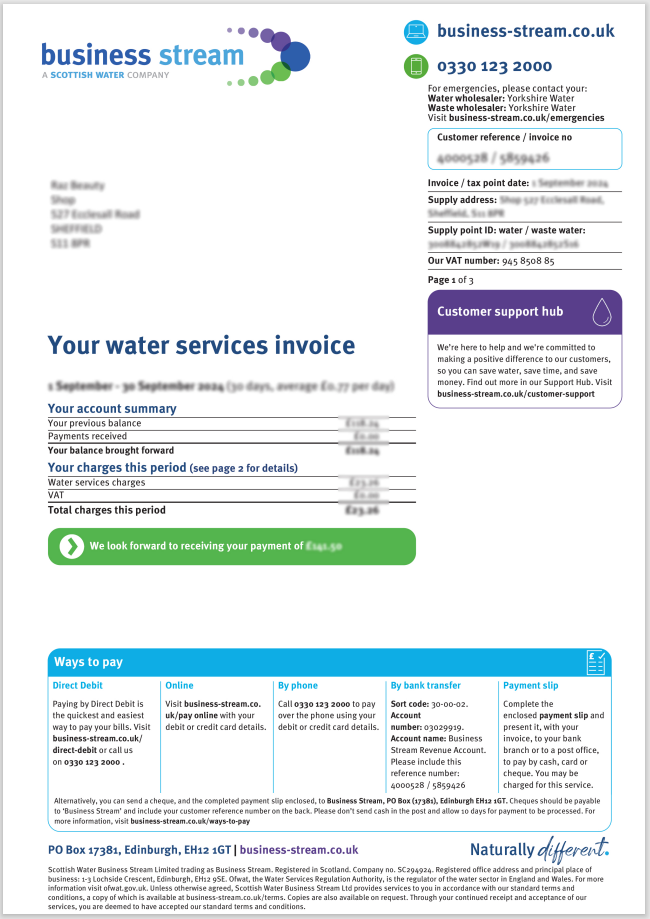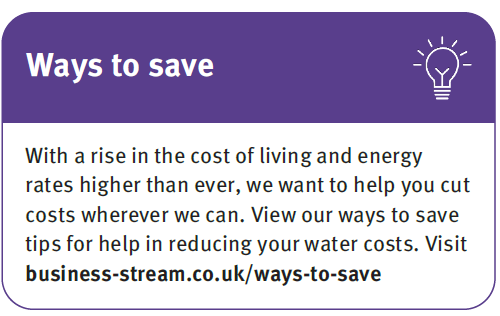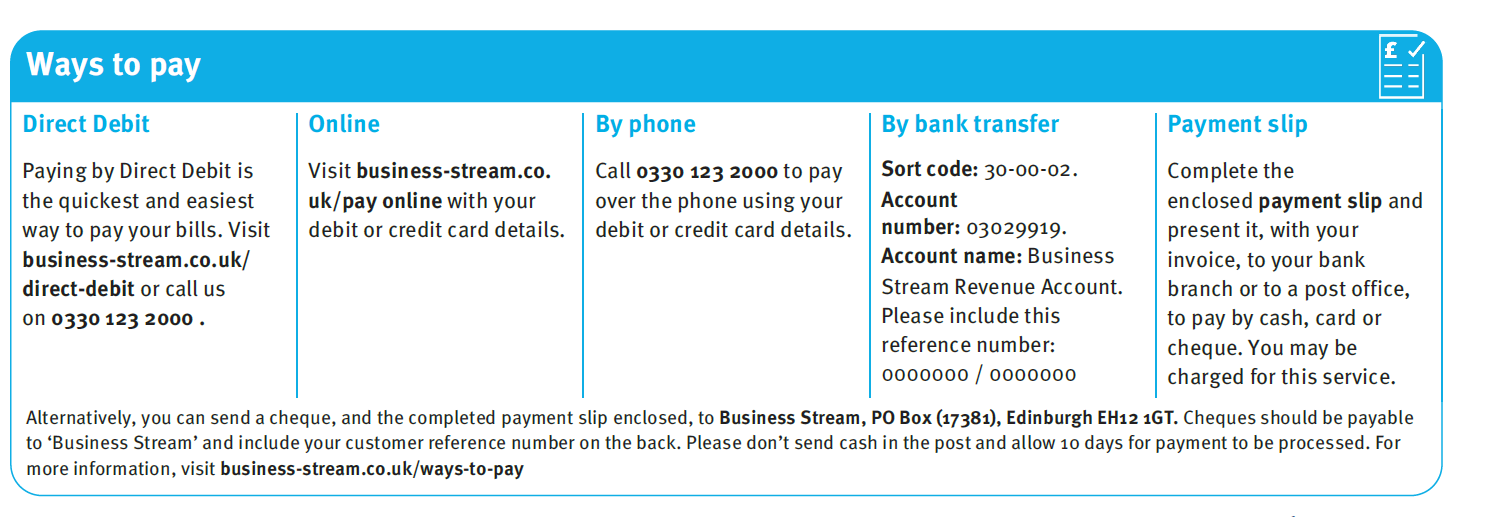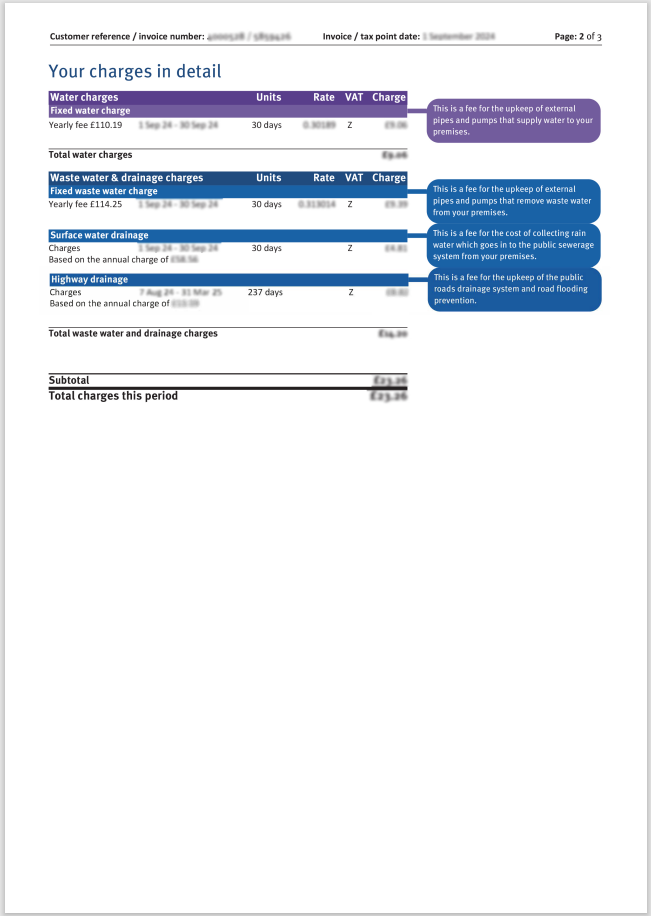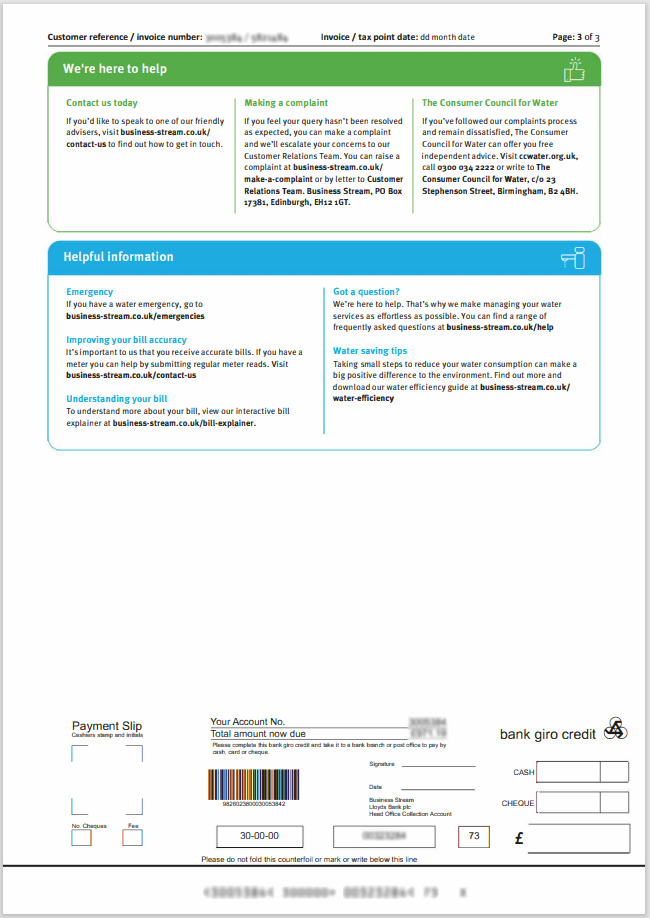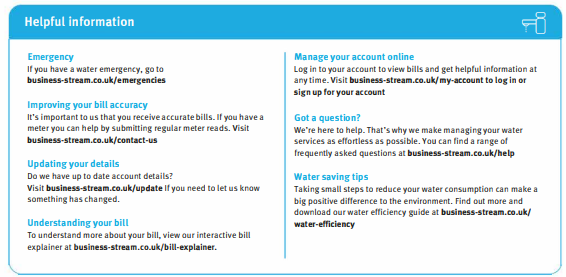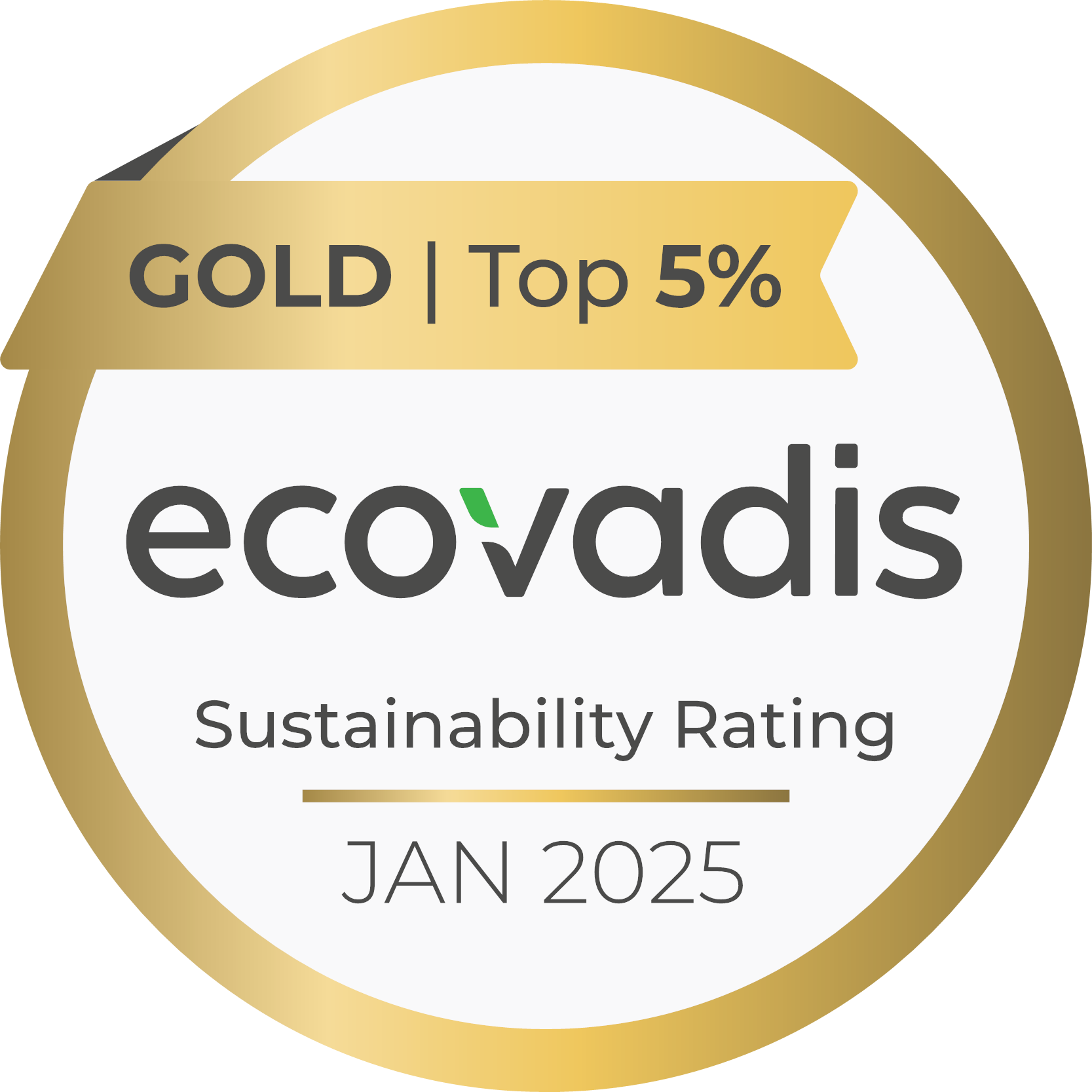Your customer reference number is your unique 7 to 10-digit number, sometimes called your ‘billing reference number’. You’ll need this if you’d like to discuss your account with us.
Your invoice number is sometimes called your ‘bill number’. This is a unique number which identifies the particular bill that you’re looking at. We’ll ask for this number if you contact us with a specific query or issue relating to this bill.

